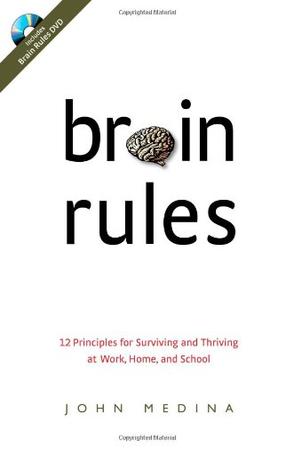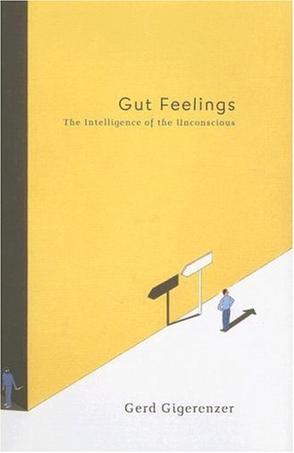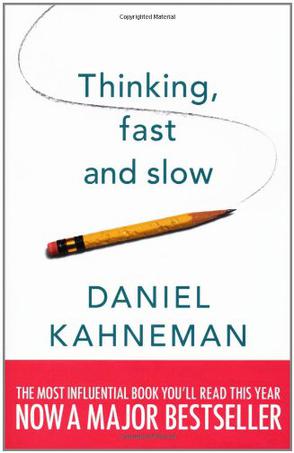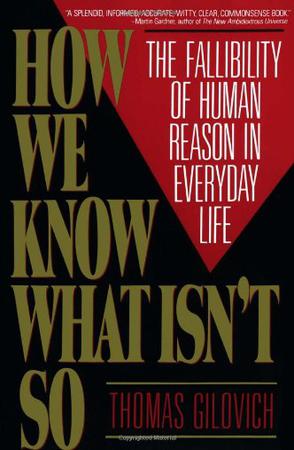-

Brain Rules
In Brain Rules, Dr. John Medina, a molecular biologist, shares his lifelong interest in how the brain sciences might influence the way we teach our children and the way we work. In each chapter, he describes a brain rule--what scientists know for sure about how our brains work--and then offers transformative ideas for our daily lives.Medina's fascinating stories and infectious sense of humor breathe life into brain science. You'll learn why Michael Jordan was no good at baseball. You'll peer over a surgeon's shoulder as he proves that most of us have a Jennifer Aniston neuron. You'll meet a boy who has an amazing memory for music but can't tie his own shoes.You will discover how: * Every brain is wired differently * Exercise improves cognition * We are designed to never stop learning and exploring * Memories are volatile * Sleep is powerfully linked with the ability to learn * Vision trumps all of the other senses * Stress changes the way we learnIn the end, you'll understand how your brain really works--and how to get the most out of it. -

Give and Take
An innovative, groundbreaking book that will captivate readers of Malcolm Gladwell, Daniel Pink, The Power of Habit, and Quiet For generations, we have focused on the individual drivers of success: passion, hard work, talent, and luck. But today, success is increasingly dependent on how we interact with others. It turns out that at work, most people operate as either takers, matchers, or givers. Whereas takers strive to get as much as possible from others and matchers aim to trade evenly, givers are the rare breed of people who contribute to others without expecting anything in return. Using his own pioneering research as Wharton's youngest tenured professor, Grant (author of Originals: How Non-Conformists Move the World) shows that these styles have a surprising impact on success. Although some givers get exploited and burn out, the rest achieve extraordinary results across a wide range of industries. Combining cutting-edge evidence with captivating stories, this landmark book shows how one of America's best networkers developed his connections, why the creative genius behind one of the most popular shows in television history toiled for years in anonymity, how a basketball executive responsible for multiple draft busts transformed his franchise into a winner, and how we could have anticipated Enron's demise four years before the company collapsed-without ever looking at a single number. Praised by bestselling authors such as Dan Pink, Tony Hsieh, Dan Ariely, Susan Cain, Dan Gilbert, Gretchen Rubin, Bob Sutton, David Allen, Robert Cialdini, and Seth Godin-as well as senior leaders from Google, McKinsey, Merck, Estee Lauder, Nike, and NASA-Give and Take highlights what effective networking, collaboration, influence, negotiation, and leadership skills have in common. This landmark book opens up an approach to success that has the power to transform not just individuals and groups, but entire organizations and communities. -

Gut Feelings
Why is split second decision-making superior to deliberation? Gut Feelings delivers the science behind Malcolm Gladwell??s Blink Reflection and reason are overrated, according to renowned psychologist Gerd Gigerenzer. Much better qualified to help us make decisions is the cognitive, emotional, and social repertoire we call intuition??a suite of gut feelings that have evolved over the millennia specifically for making decisions. ??Gladwell drew heavily on Gigerenzer??s research. But Gigerenzer goes a step further by explaining just why our gut instincts are so often right. Intuition, it seems, is not some sort of mystical chemical reaction but a neurologically based behavior that evolved to ensure that we humans respond quickly when faced with a dilemma?? (BusinessWeek). -

Thinking Fast and Slow
Daniel Kahneman, recipient of the Nobel Prize in Economic Sciences for his seminal work in psychology challenging the rational model of judgment and decision making, is one of the world's most important thinkers. His ideas have had a profound impact on many fields-including business, medicine, and politics-but until now, he has never brought together his many years of research in one book. In "Thinking, Fast and Slow", Kahneman takes us on a groundbreaking tour of the mind and explains the two systems that drive the way we think and make choices. One system is fast, intuitive, and emotional; the other is slower, more deliberative, and more logical. Kahneman exposes the extraordinary capabilities-and also the faults and biases-of fast thinking, and reveals the pervasive influence of intuitive impressions on our thoughts and behaviour. The importance of properly framing risks, the effects of cognitive biases on how we view others, the dangers of prediction, the right ways to develop skills, the pros and cons of fear and optimism, the difference between our experience and memory of events, the real components of happiness-each of these can be understood only by knowing how the two systems work together to shape our judgments and decisions. Drawing on a lifetime's experimental experience, Kahneman reveals where we can and cannot trust our intuitions and how we can tap into the benefits of slow thinking. He offers practical and enlightening insights into how choices are made in both our professional and our personal lives-and how we can use different techniques to guard against the mental glitches that often get us into trouble. "Thinking, Fast and Slow" will transform the way you take decisions and experience the world. -

How We Know What Isn't So
From Publishers Weekly Sports fans who think that basketball players shoot in "hot streaks," and maternity nurses who maintain that more babies are born when the moon is full adhere to erroneous beliefs, according to Gilovich, associate professor of psychology at Cornell. With examples ranging from the spread of AIDS to the weight of Scholastic Aptitude Test scores, he skewers popular but mistaken assumptions. Faulty reasoning from incomplete or ambiguous data, a tendency to seek out "hypothesis-confirming evidence" and the habit of self-serving belief are among the factors Gilovich pinpoints in his sophisticated anaylsis. However, in the book's second half, his debunking of holistic medicine, ESP and paranormal phenomena is superficial and one-sided, marred by some of the very tendencies he effectively exposes in the "true believers." Copyright 1991 Reed Business Information, Inc. --This text refers to an out of print or unavailable edition of this title. From Kirkus Reviews The subtexts of this first-class critique of human (non)reason are that we all tell ourselves lies (at least some of the time)...that if you want to believe it's true, it is (faith healing, ESP)...that humans can't help seeing patterns where none exist (in clouds, in disastrous events, in gamblers' streaks). Furthermore, if you would like to learn more about how not to deceive yourself, you might take a course in one of the ``soft'' probabilistic sciences like psychology. This might be construed as self-serving, since Gilovich happens to teach psychology at Cornell. However, the point is well taken because such courses should expose students to a minimum of statistics--such as the law of regression, which says that when two variables are partially related, extremes in one variable are matched, on average, by less extreme variables in the other. (Children of tall parents are tall, but not as tall as their parents.) Gilovich attributes the general lack of appreciation of the law to ``the compelling nature of judgment by representation''--by which the predicted outcome should be as close to the data as possible: the son of a 6'5'' dad should be close to 6'5''. Gilovich also points to other pitfalls in reasoning, such as failure to record negative outcomes (how many times do you dream of an old friend and not bump into him the next day?). And he discusses deeper motives--e.g., fear of dying, prospects of power or immortality, and similar self-aggrandizing traits that fortify superstitions and the will to believe. Altogether, a satisfying splash of skepticism and reason in a world where the Lake Wobegon phenomenon--``the women are strong, the men are good-looking and all the children are above average''- -prevails. -- Copyright ©1991, Kirkus Associates, LP. All rights reserved. --This text refers to an out of print or unavailable edition of this title. -

Beyond Feelings
This succinct, interdisciplinary introduction to critical thinking successfully dares students to question their own assumptions and to enlarge their thinking through the analysis of the most common problems associated with everyday reasoning. The text offers a unique and effective organization: Part I explains the fundamental concepts; Part II describes the most common barriers to critical thinking; Part III offers strategies for overcoming those barriers.